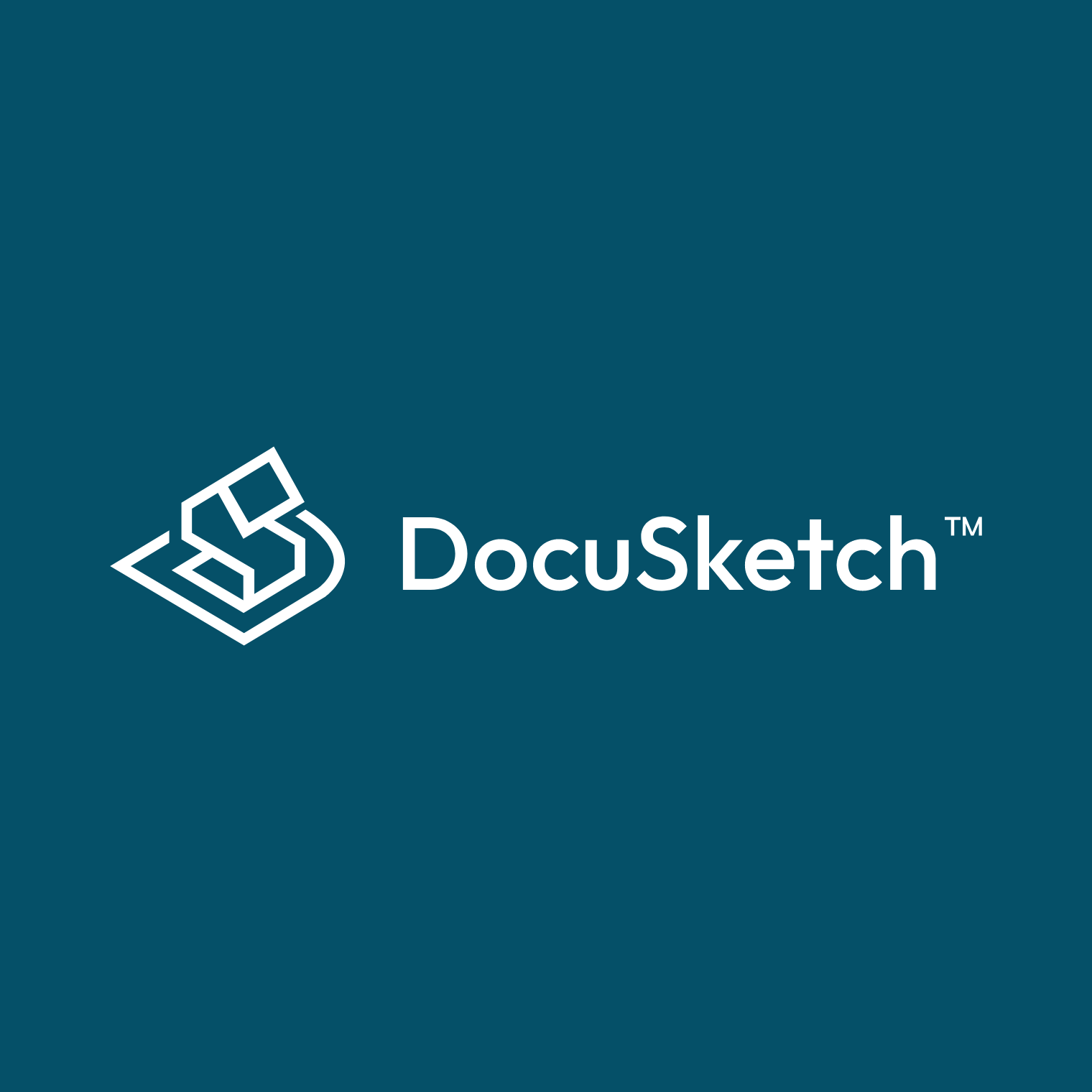CONCLUSION
When someone is looking for a restoration business, they usually need to find someone vetted and highly rated – fast.
According to a recent study from Statista, 21% of consumers search online to find local businesses every day.
So how do you make sure that you’re the company that shows up at the top of that list every time?
The answer: a well-crafted digital marketing strategy.
Effective digital marketing ideas for restoration companies include:
- Create a Google Business Profile
- Run Google Ads (PPC Advertising)
- Do local SEO
- Get started with social media marketing
- Optimize your website
These tactics comprise a restoration marketing strategy. Below, learn everything you need to get started.
Create a Google Business Profile (formerly Google My Business)
A Google Business Profile is a customized listing that shares information about a business. These are free to create and allow you to share important details like hours, location, images, answer FAQs, and respond to reviews.
You’ve likely interacted with many of these before, whether you’re looking for a new restaurant or a place to stop during a road trip.
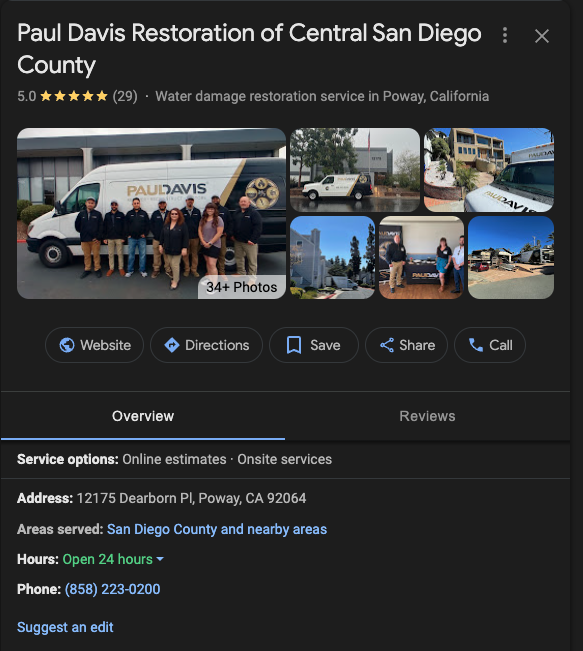
Creating and optimizing these profiles is critical for appearing in Google Maps and “local pack” results, like those shown below. Essentially, if someone Googles “Restoration Companies” in a specific area, Google will show a list of local businesses. In order to maximize your chances of being shown as one of the top, creating a profile and staying on top of it is crucial.

Often, your Google Business profile will be the first thing a potential client will look at when researching your company – or restoration companies in general – and it needs to be set up to reflect your brand, image, and services well.
This is also the most essential place for collecting and managing reviews. Getting local customers to leave reviews is especially important.
How to optimize your Google Business Profile
- Complete your profile with accurate information. Include your business name, address, phone number, and services. If you have questions you frequently get, it’s a good idea to create an FAQ section.
- Encourage customer reviews. Ask customers to leave a review about their experience. You should respond to both positive and any negative reviews regularly to show that you’re active and engaged.
- Post updates. Keep your page accurate and relevant by posting updates about your services, promotions, changes in hours, or important company news.
- Use high-quality images. No stock photos allowed! Share only real photos of your business to build trust and set expectations.
Run Google Ads (PPC Advertising)

The number of businesses in the restoration industry continues to grow – over the past five years, the industry has grown 3.8% every year on average. Ensure you cut through the noise and jump to the top of search results with PPC ads.
What is PPC advertising?
PPC, or “pay per click” advertising is when brands pay for placement at the top of a search engine. Brands bid on terms that relate to their service offerings. For example, you might bid on the terms, “water damage restoration” or “restoration companies near me.”
These websites then show up as “Sponsored” results at the top of the page. Google Ads are the most common option, but you shouldn’t ignore Bing Ads either.
PPC advertising like Google Ads and Bing Ads can be particularly effective for restoration companies targeting urgent needs, like emergency water damage restoration.
Benefits of PPC advertising for restoration companies
- Immediate visibility. Show up in search results immediately for keywords you bid on, which means fast lead gen.
- Get specific with targeting. You’ll have the ability to target specific geographic locations and demographics – meaning that you’ll reach your specific target audience.
- Flexible budgets with measurable results. You’ll be able to see cost per click and track conversions, which makes it easy to measure your return on investment.
Drawbacks of PPC advertising
- High cost. Given the competitiveness of the restoration industry, PPC can be very expensive. For example, the keyword “water damage restoration near me” would cost approximately $39.29 per click.
- The results stop when the ads stop running. PPC is only going to produce leads for you as long as you’re putting money into it. Once you stop paying, leads and traffic will stop too.
- It’s easy to waste money. If not configured properly and managed consistently, it’s really easy to spend money and not get the results you want on this platform.
PPC advertising best practices
Ideally, you would have a professional agency set up the account and help you manage it, or have the agency manage it entirely for you. If you’re looking to get started on your own, here are a couple of top-notch resources.
📚Resources
- (Blog post) Shopify’s Complete Guide to PPC Advertising
- (YouTube video)HubSpot’s Best Pay-Per-Click Strategies For Small Businesses
Local SEO for restoration businesses
What is local SEO? SEO or “Search Engine Optimization,” is the process of showing up at the top of online search results for a given phrase or “keyword.” Local SEO is the practice of showing up in search results for a specific location. Retail stores, restaurants, or local trades benefit the most from local SEO, as it helps customers in the same areas find and patronize their businesses.
Generally, SEO is a global practice, with brands attempting to rank first for keywords and phrases that aren’t region-specific. But with local SEO, the goal is to rank first within the parameters where you offer services.
Restoration businesses serve a local market, and many people in that market won’t know their options for local restoration businesses until they need to hire one. This makes local SEO especially important for restoration businesses compared to other local service industries.

Best practices for local SEO
✅ Have a well-put-together Google Business Profile & Bing Places profile. You should have a consistent flow of recent 5-star reviews, real photos, hours, answers to frequently asked questions, and responses to both positive and negative reviews.
✅ Easy to navigate & SEO optimized website. Your website should be clean, clear, accessible, and easy to navigate. Consider hiring a local SEO professional to review or manage it. If that’s not something you’re interested in, local SEO guides from brands like Whitespark and BrightLocal can help.
📚 Resources:
✅ Local brand presence. Ensure you have placement in online local directories. These include websites like your local Chamber of Commerce, Nextdoor, Angi, Facebook, and Yelp.
✅ Social presence. Ideally, you’re active on at least one social platform like X (formerly Twitter) or LinkedIn. For example, Paul Davis restoration has X profiles for each different location it serves, with a link back to its website.
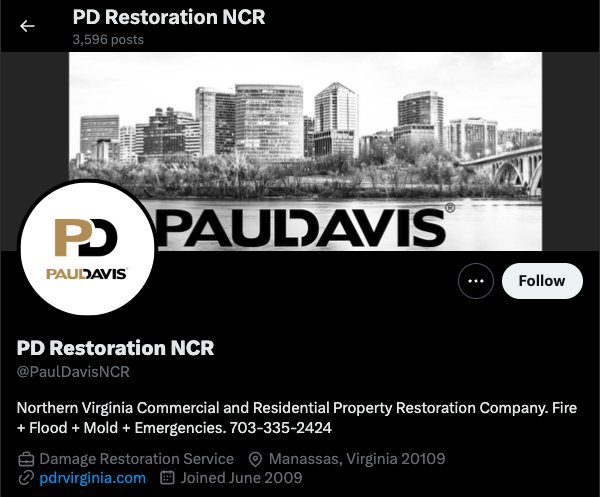
Local SEO benefits
Having strong local SEO is the cheapest form of lead generation long term, and can deliver huge returns if you consistently appear near the top of results.
Local SEO drawbacks
- Results take time. Expect results to take at least a year before leads start rolling in.
- Results are subject to Google updates. Don’t rely just on local SEO for lead generation – as Google controls how search results are surfaced, things can change quickly and with little notice.
- Finding SEO professionals to help can be difficult. While there are abundant agencies and consultants to choose from, someone who is able to deliver real results can be challenging to find.
Social media marketing
Social media for restoration companies is a type of digital marketing that involves leveraging social media platforms like X, Facebook, and LinkedIn to connect with potential clients and offer helpful advice.
Social media best practices
Some healthy components of a good social media strategy include: sharing informative content like disaster preparedness tips or restoration processes, posting consistently, and engaging with comments and messages.
For example, Paul Davis Restoration has a strong LinkedIn presence with 15k followers.
They post often, sharing helpful reminders and informative content, like this post for those in the path of Hurricane Milton:
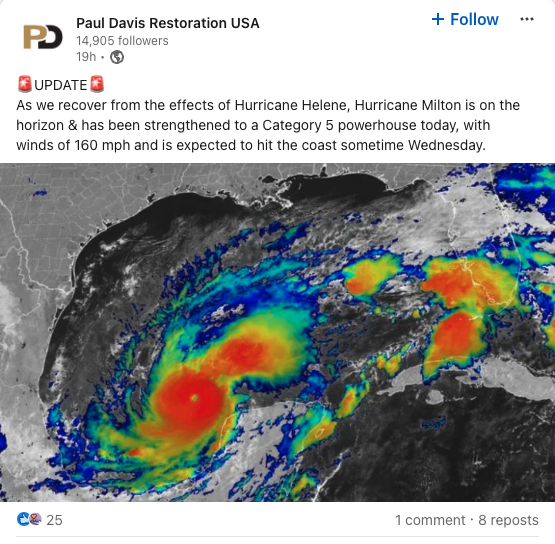
Other ideas include: showcasing projects with before and after pictures, posting client testimonials, and sharing educational content.
Social media benefits
- Build trust in your brand. A consistent social media presence will help position your business as a high-quality, professional service that potential customers can trust.
- Relatively cheap and quick to set up. Setting up your social media profiles is quick and easy.
Social media drawbacks
- Time-intensive. In order to be successful, social media channels require consistent posting and engagement.
- Can be expensive. If you choose to hire an agency or freelancer to manage this for you, the cost for this demanding channel can add up quickly.
- Organic reach is limited. In order to expand your visibility, you might need to go the paid promotion route. It can be difficult to gain traction with organic posts only.
- Difficult to generate a direct return. Social media is a way of maintaining a relationship and representing your brand well. But due to the challenges social poses when it comes to tracking ROI, it likely won’t be a primary lead generation channel for you.
Optimize your website
Your website acts as the main hub for your business. This is likely where potential clients will go as part of the vetting process before contacting you.
Without a clear, accessible, and well-designed website, clients will have a difficult time finding your brand trustworthy. They might also struggle to understand the types of services you offer and whether you’re the right fit.
This will impact the success of other digital marketing tactics. Even if you have great local SEO or strong PPC ads, your website has the ability to stop potential clients from saying yes to you over the competition.
Essential features of a well-built website
Below, we’ve outlined five features of a well-built restoration website. Your website should have:
- A clear, professional design with easy navigation
- A mobile-friendly version that loads quickly
- Pages for each type of service offered
- Testimonials and case studies that build trust
- Compelling call-to-actions (CTAs)
1. Clear, professional design with easy navigation
The easier it is to navigate your website, the faster potential clients will be able to evaluate you as a service provider.
PuroClean’s use of simple navigation, an easy-to-find phone number, and convenient local office calculator is a great example of what you should strive for.

2. Mobile-friendly and fast-loading
Many potential clients will locate you via a mobile device. If your website looks and works well on desktop but struggles on mobile, you could lose a lot of business. As you build and optimize your site, make sure your website builder has a mobile friendly view, where you can test and edit the mobile version of your site in real time.
True North Restoration does this well, with a menu that automatically expands on mobile.
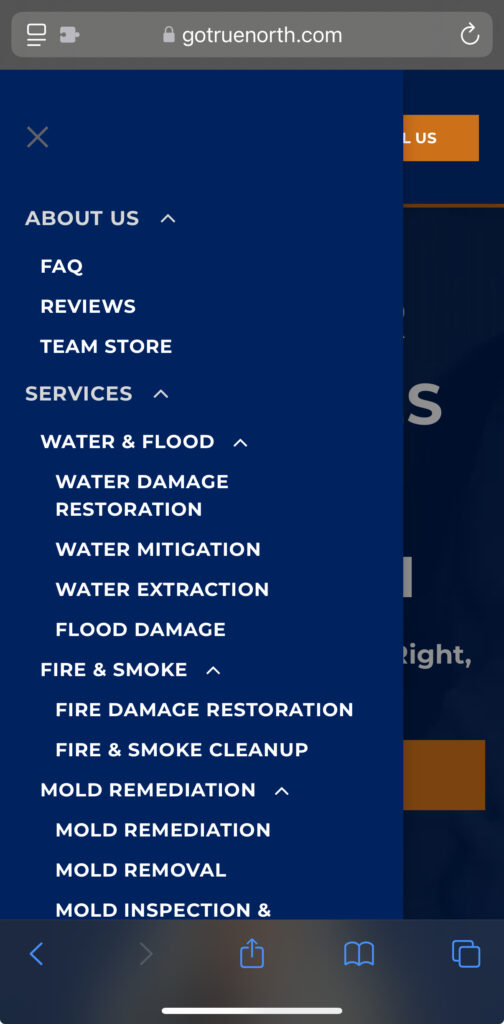
3. Pages for each type of service offered
Ensure that your service pages clearly outline each type of restoration service you offer. The clearer you can be here, the better.
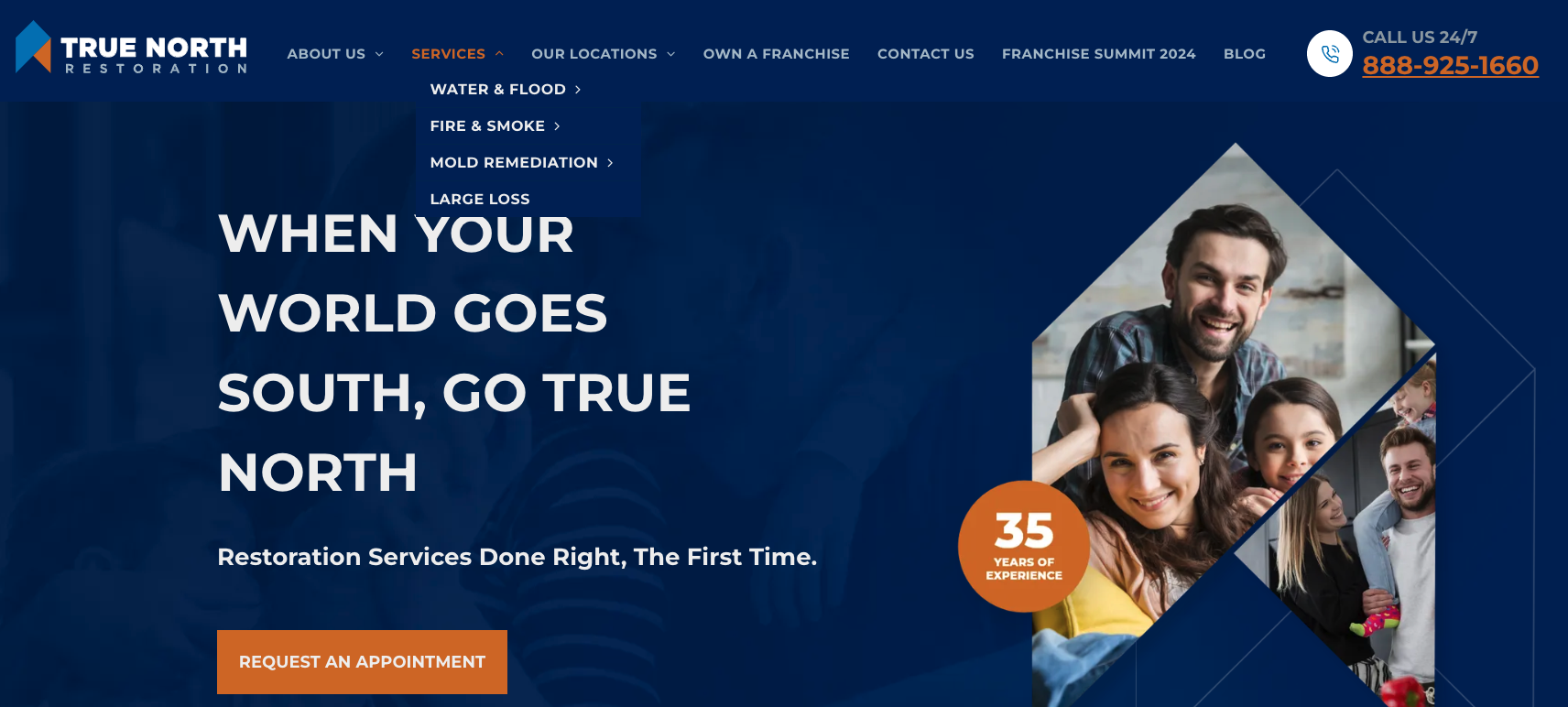
4. Testimonials and case studies
Testimonials are one of the best ways to build trust online. A collection of customers who have had positive experiences often sends the right signals to customers.
For example, ServiceMaster includes a testimonials section under “Why Us” on their website, complete with detailed five star reviews.

5. Compelling call-to-actions (CTAs)
For restoration businesses, eye-catching CTAs can do more than generate leads. For those in need of emergency service, a well-placed phone number and “Call for 24/7 emergency service” is essential. PuroClean does this well, providing a phone number, a way to find your local office, and stating that they’re available 24/7 in a bold, eye-catching font.
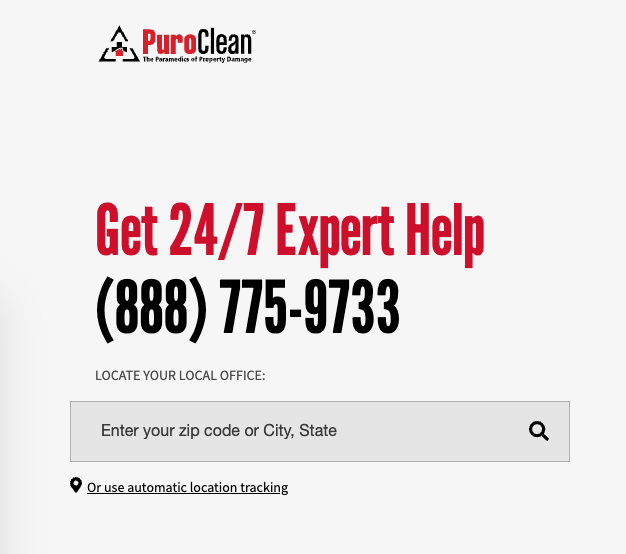
Get started with internet marketing for restoration companies
Now that you’ve learned the top tactics for restoration digital marketing, it’s time to get to work. The more time and effort you put into digital marketing, the more effective it will be in generating new leads and customers, building trust in your business, and creating more visibility for you overall.
In order to get started, you don’t need to do everything right away. We recommend starting with the absolute essentials: creating a Google Business Profile, optimizing your website, and doing some local SEO (like getting placement in local online directories).
Spread out all over North America


